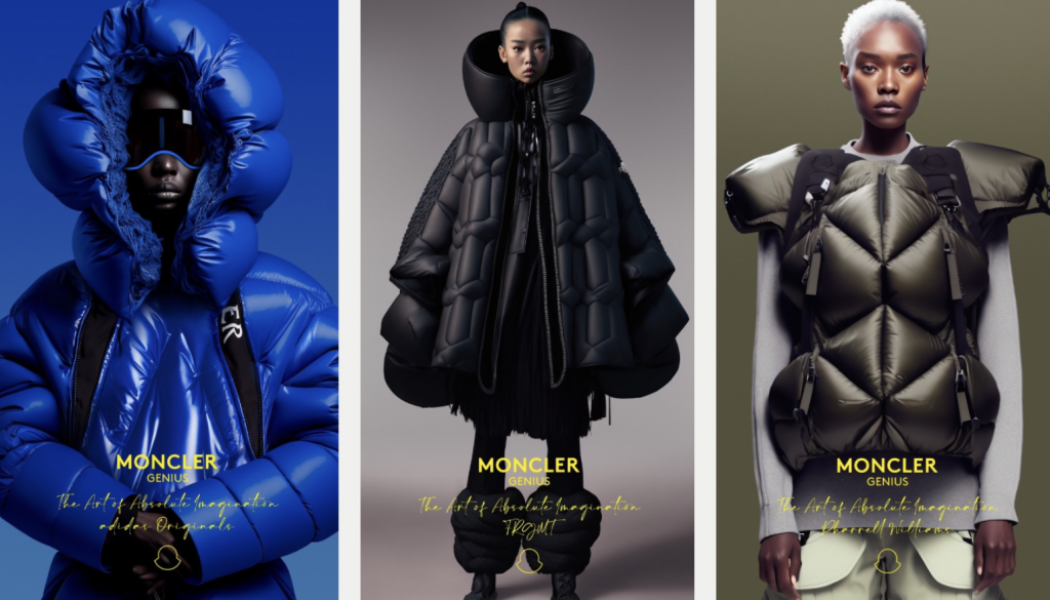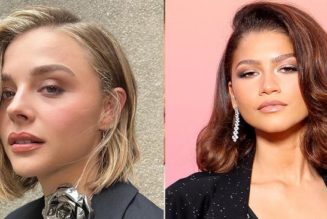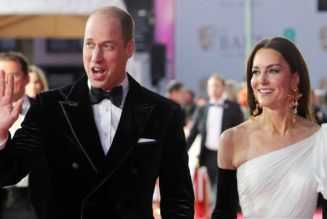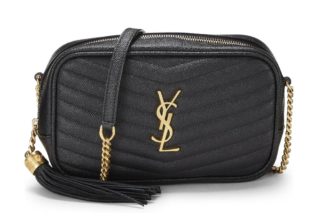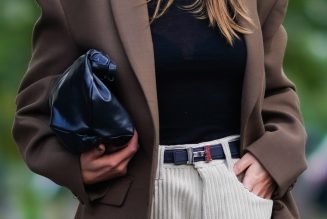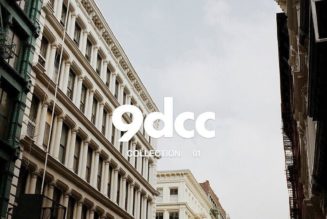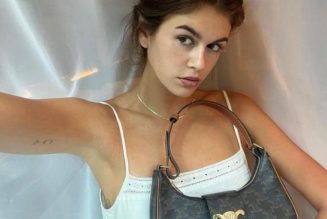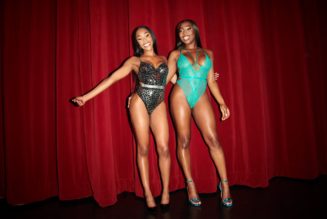Click here to download Jing Daily’s latest insight report, “The Future of Generative AI for Luxury” to explore the $275 billion generative AI opportunity for luxury.
In a period marked by economic uncertainty and tightening budgets, fashion executives find themselves at a complex juncture.
On the one hand, the allure of generative AI technology presents an enticing opportunity to minimize costs, a crucial consideration as recession pressures squeeze budgets further. On the other hand, luxury’s essence rests on craftsmanship, exclusivity, and human creativity, elements that no technology can fully replicate.
The challenge, then, is to leverage AI to create value without losing that intrinsic luster. As luxury houses like Moncler, Zegna, and Valentino take their first steps with the technology, the industry watches with keen interest.
Big brands’ early experiments
Big names like Moncler, Zegna, and Valentino have already taken their first steps using AI technology for their campaigns. Ralph Lauren has also started testing generative AI use cases for copy editing and graphics, according to CFO and COO Jane Nielsen. Moncler’s Genius Campaign during London Fashion Week 2023, for example, married AI’s capabilities with human creativity to present a captivating blend.
Maison Meta collaborated with creative agency WeSayHi to create the campaign, highlighting Moncler’s latest collaborations with various fashion designers and brands, including Adidas Original, Pharrell Williams and Alicia Keys.
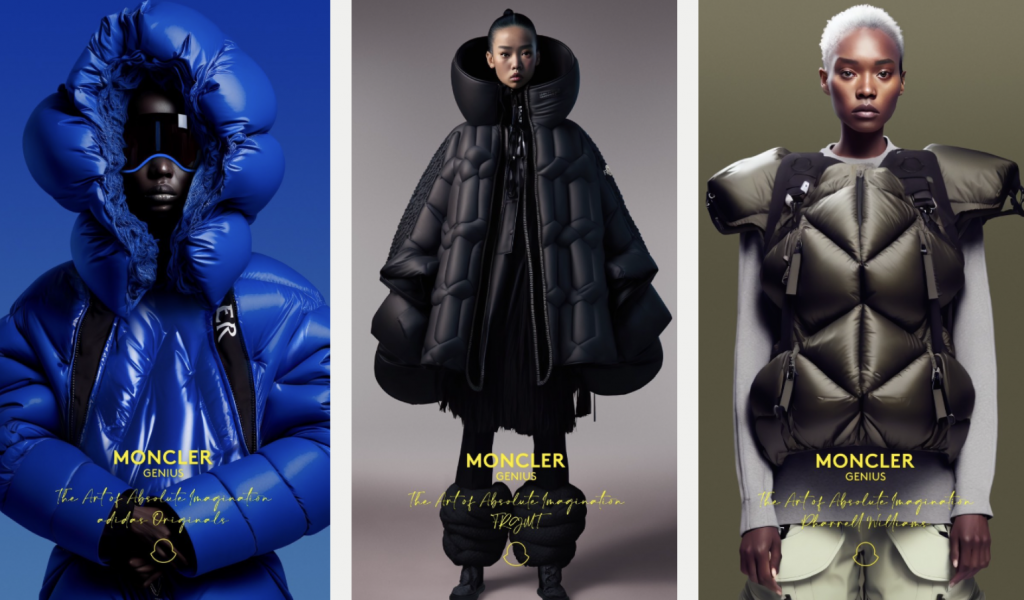
Moncler Genius’ AI-generated visuals for its Fall 2023 collection. Maison Meta collaborated with creative agency WeSayHi to create the campaign.
Images: Moncler Genius
Valentino’s Essential line embraced AI to help with photography, probing an exciting intersection of AI and fashion. Featuring models against a white background and large machinery, the campaign images whisper at fusions between man and machine, exemplified by the way the visuals were created.
It’s still early days, and that’s both a challenge and an opportunity for brands. One of the key short-term technological challenges is photorealism. Currently, there’s still a substantial amount of manual work required to fine-tune and perfect AI-generated images so they look real. The craft of translating digital outputs into tangible luxury still demands a human touch.
French fashion brand Casablanca is known for shooting some of its campaigns on film. For its Spring/Summer 2023 collection, it went with an AI-generated campaign.
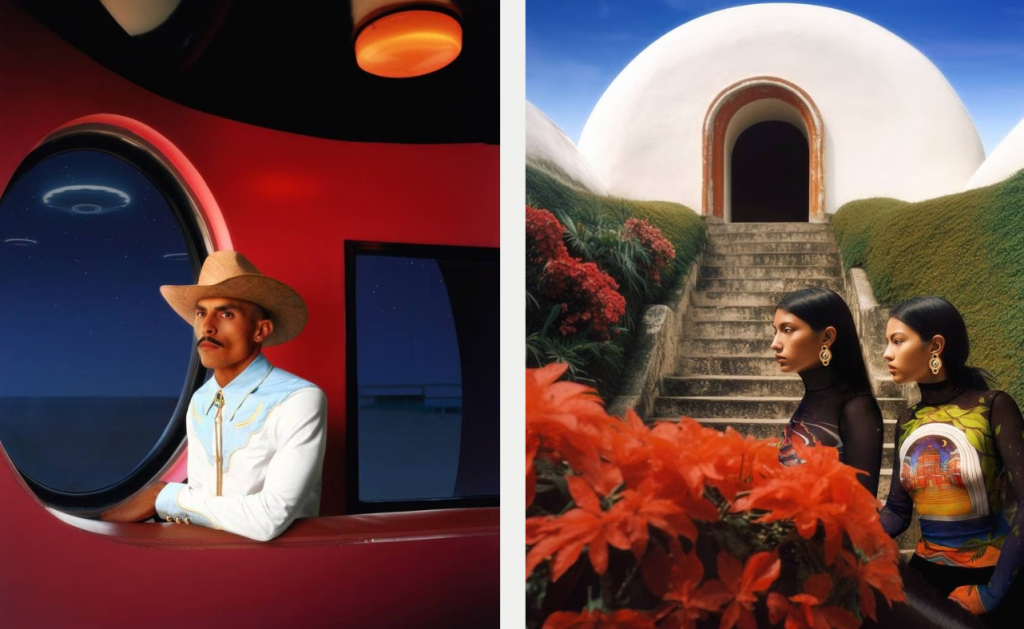
Casablanca’s AI-generated campaign still required a lot of manual work. Images: Casablanca
Speaking to Business of Fashion about the process, founder Charaf Tajer says that Casablanca still needed to significantly retouch the AI-generated visuals since the AI technology didn’t know what the latest collection looked like. He added that the freedom AI provides was a double-edged sword, since it “essentially offered infinite possibilities.”
The pursuit of cost-efficiency through AI must be carefully balanced against the risk of diluting brand prestige. Luxury’s intrinsic value lies in its exclusivity and craftsmanship, and over-reliance on automation could tarnish this image. Despite these hurdles, generative AI holds significant promise for enhancing the consumer journey. The generational shift towards more extensive AI usage in the luxury sector is very likely to continue as the technological advancements will set new standards in what’s possible for creating unique and thoughtful campaigns.
Fashion brands must carefully weigh the benefits and potential pitfalls of AI, crafting a strategy that leverages its potential while honoring the tradition and artistry that define luxury. The boom in technological capabilities is exciting, yet it demands a careful and considered approach to ensure that brands reframe their methods without losing the essence of what makes them uniquely luxurious.
Another challenge lies in how the technology will be incorporated within a brand’s values. The technology is advancing at a pace that commands attention, but with this swift progression comes a pressing need for thoughtful integration.
The coming months will likely see a surge in AI integration across more facets of the luxury sector, heralding an era that respects the tradition of craftsmanship while embracing the boundless possibilities of digital artistry. The fashion world is poised for an exciting transformation.
